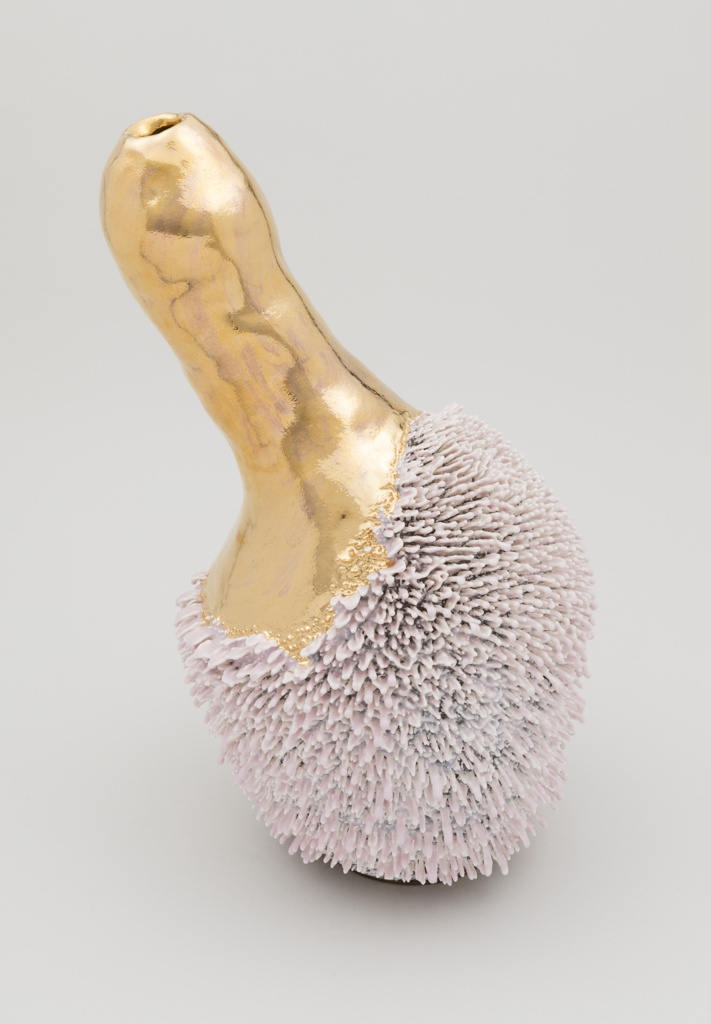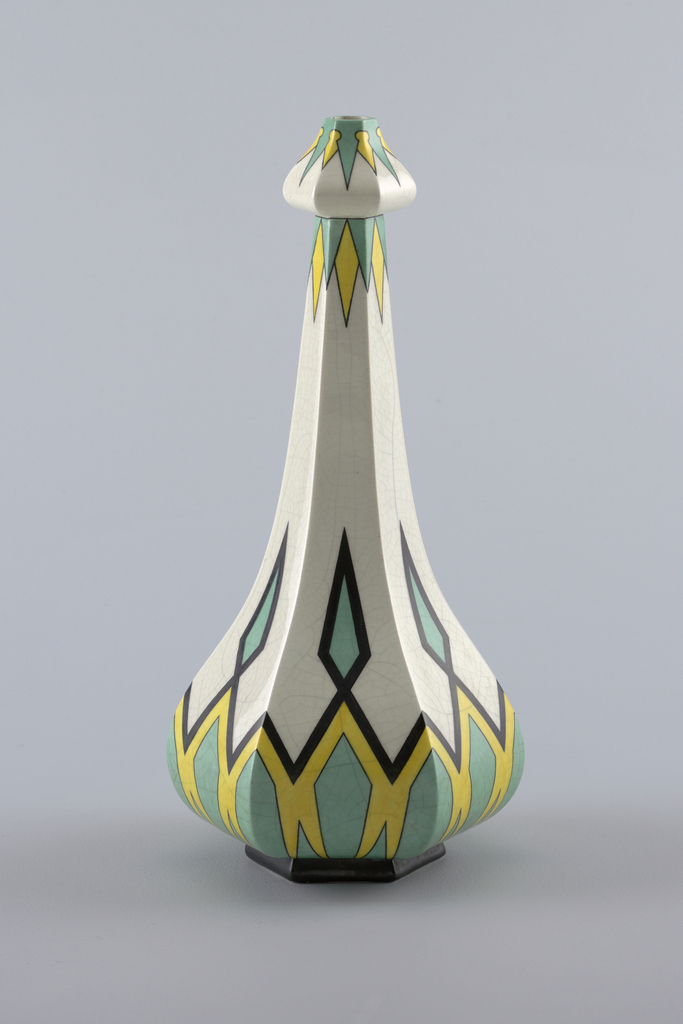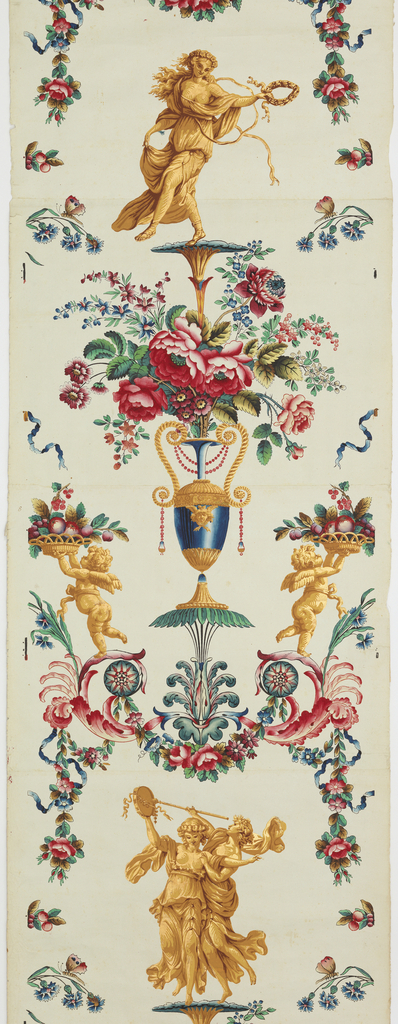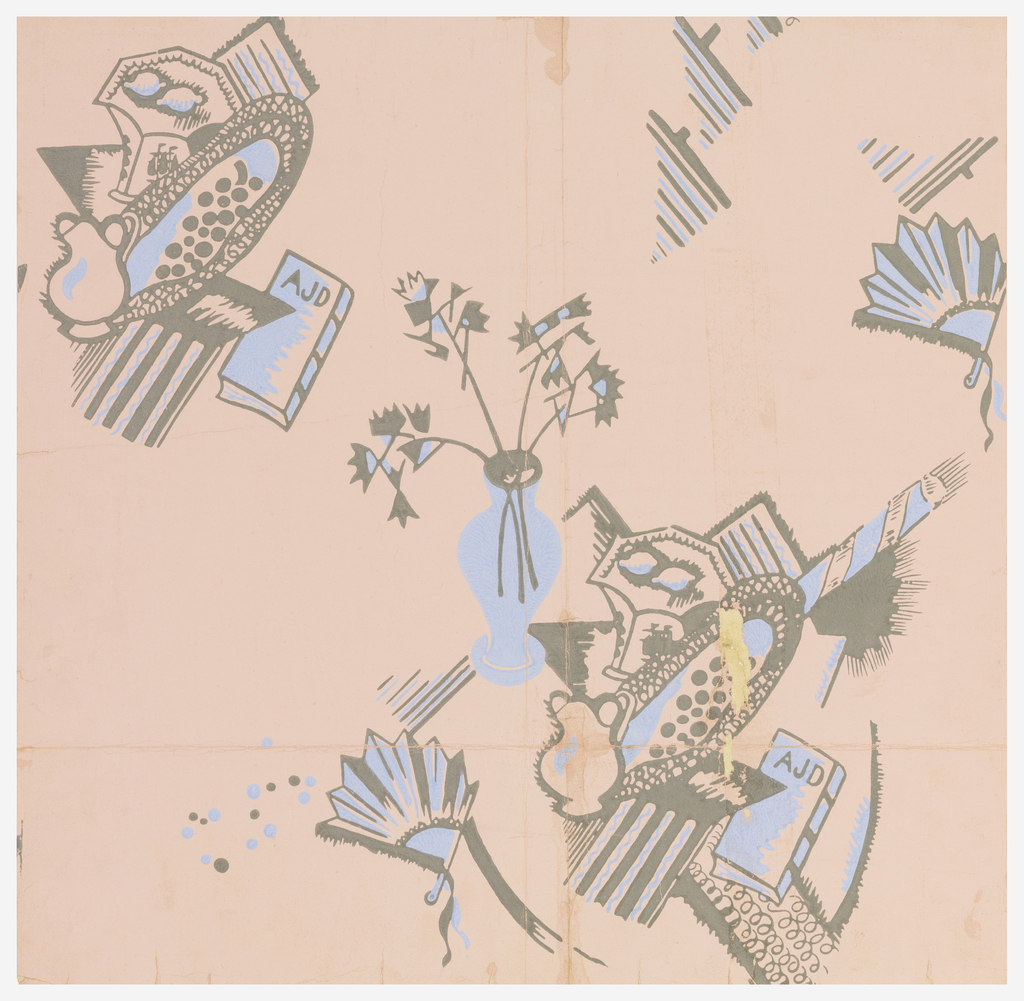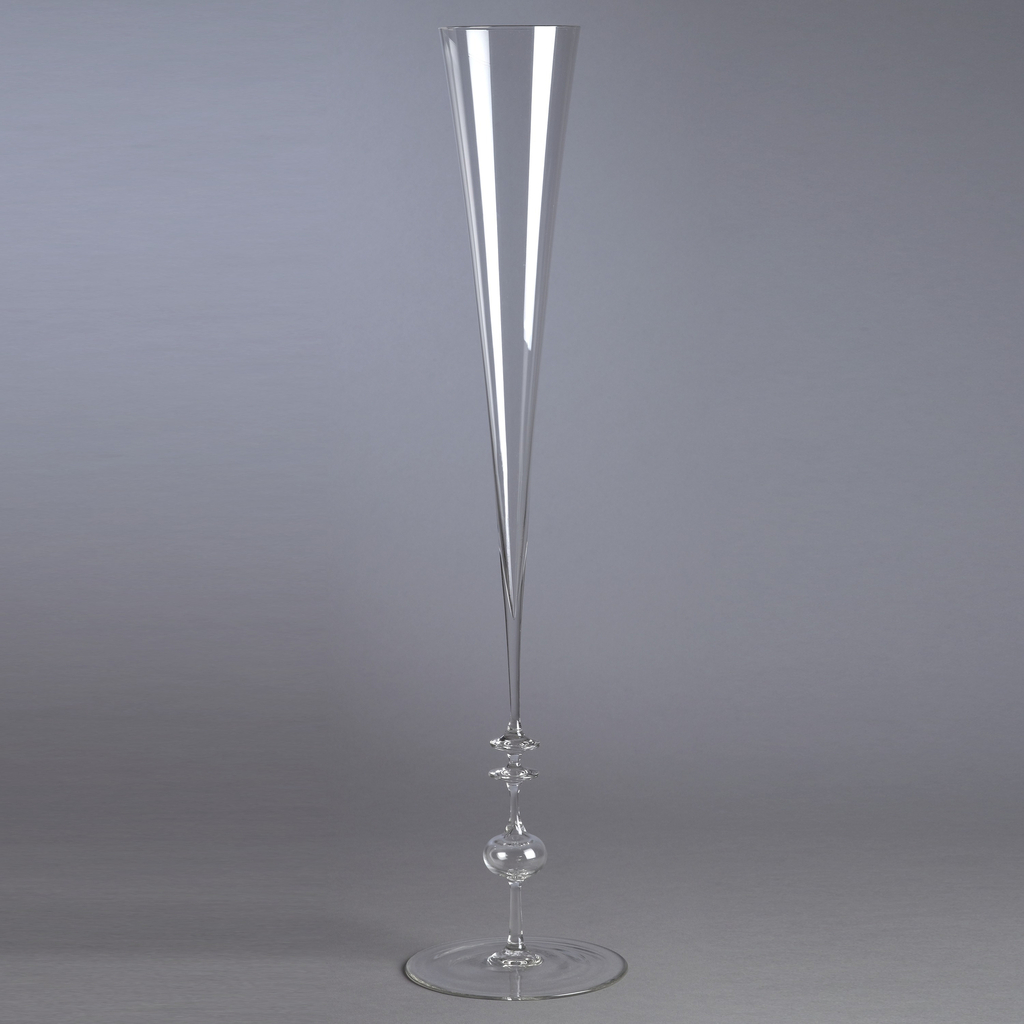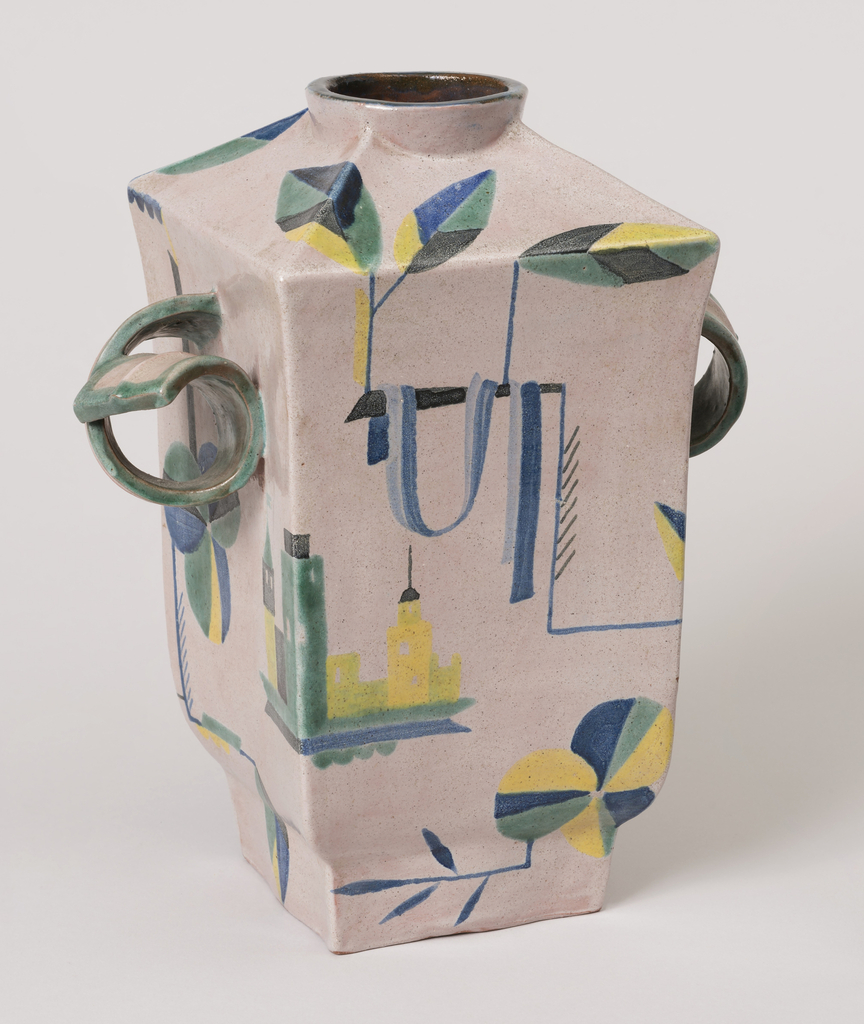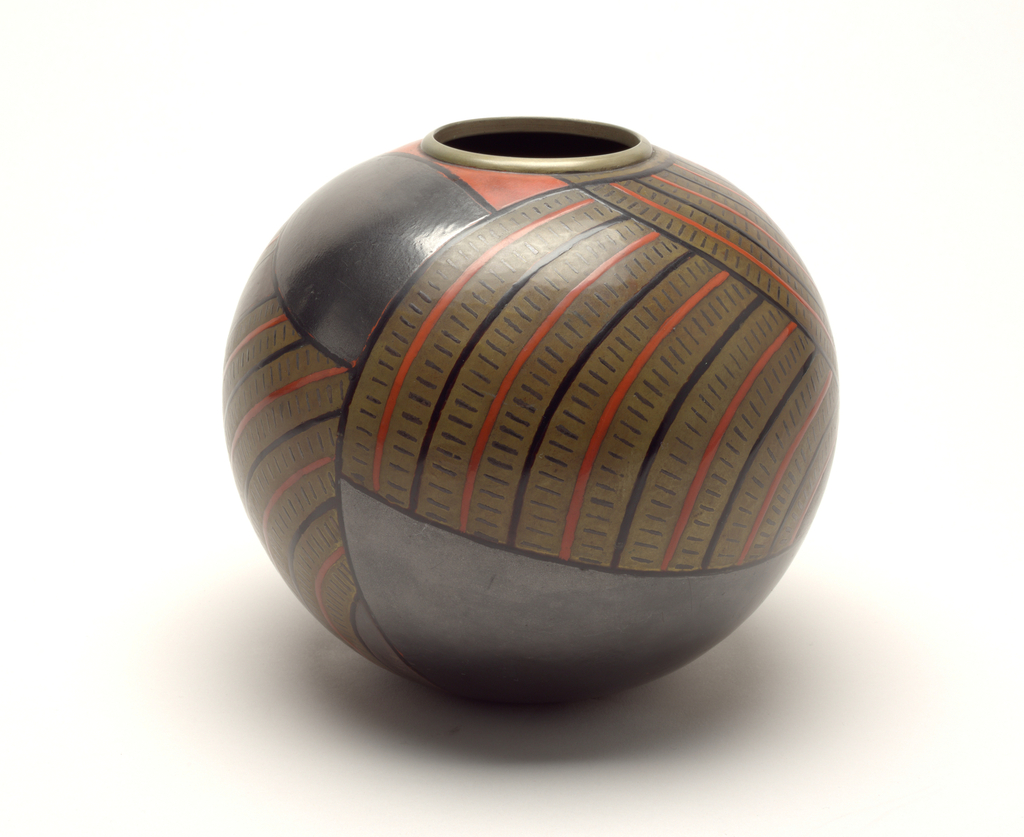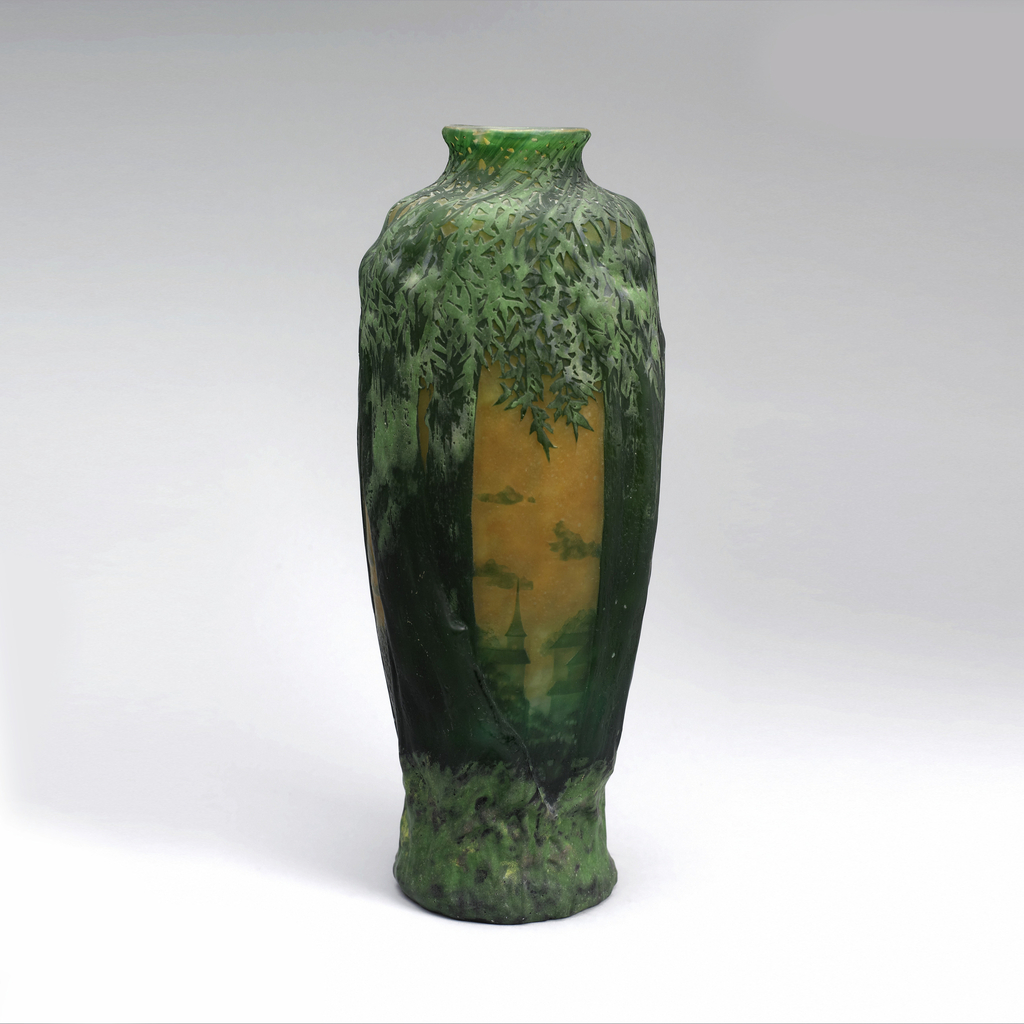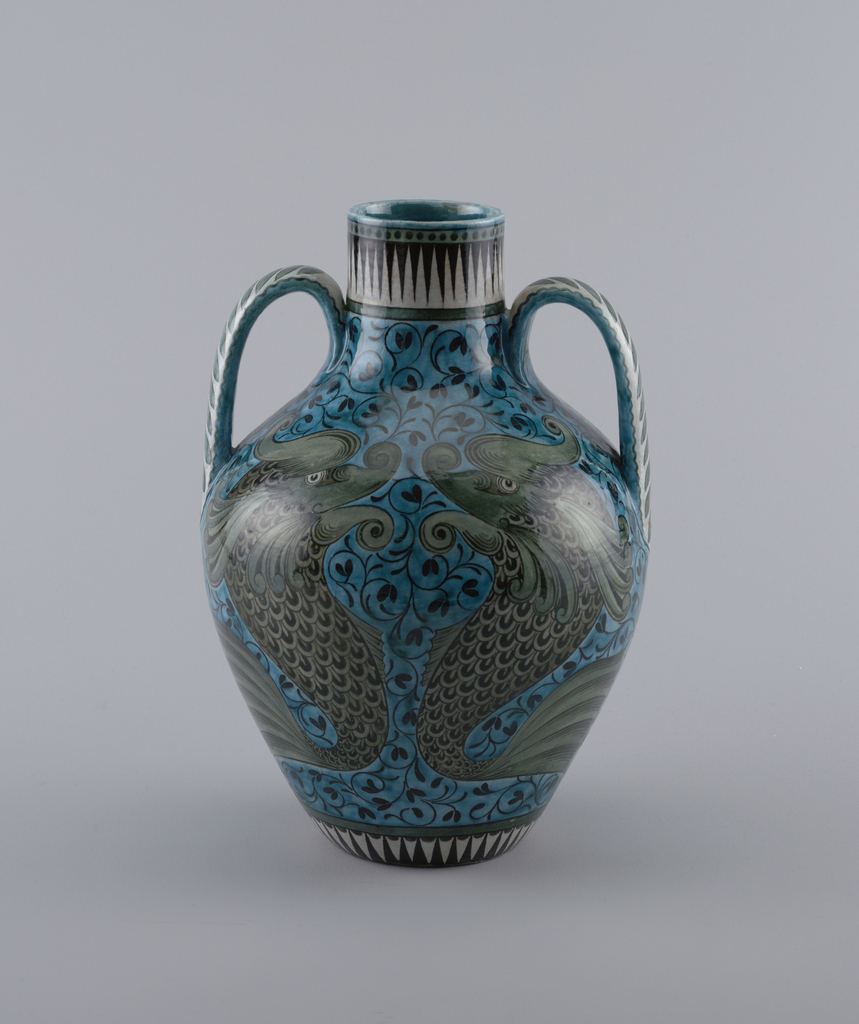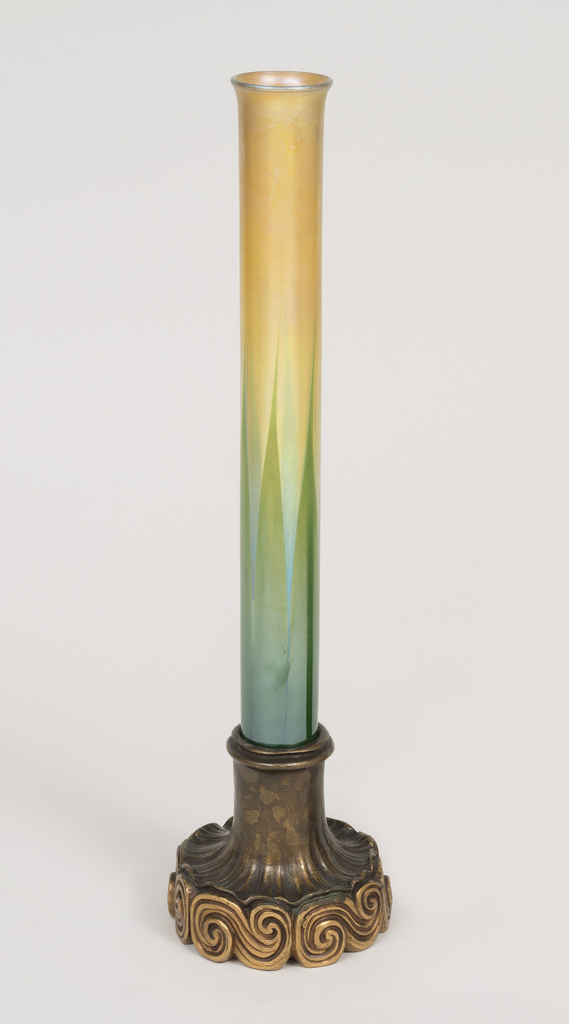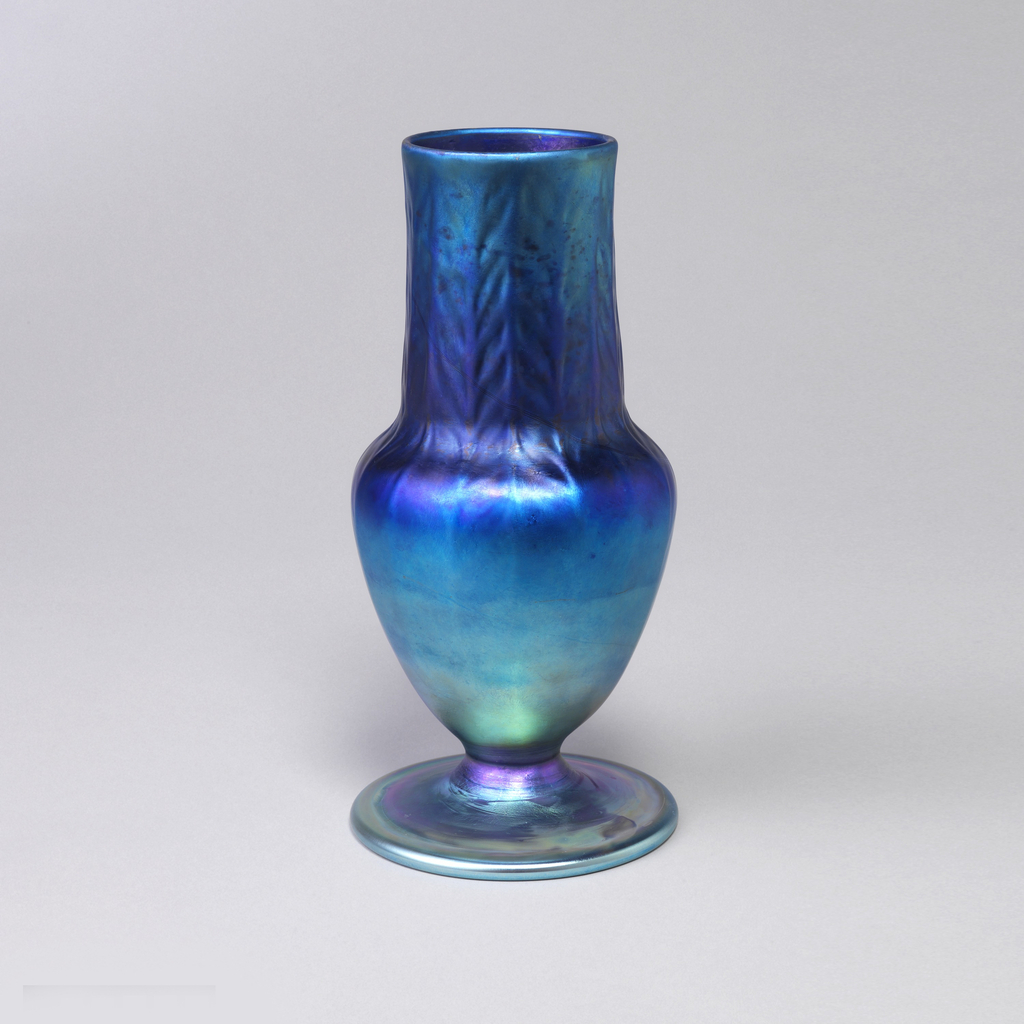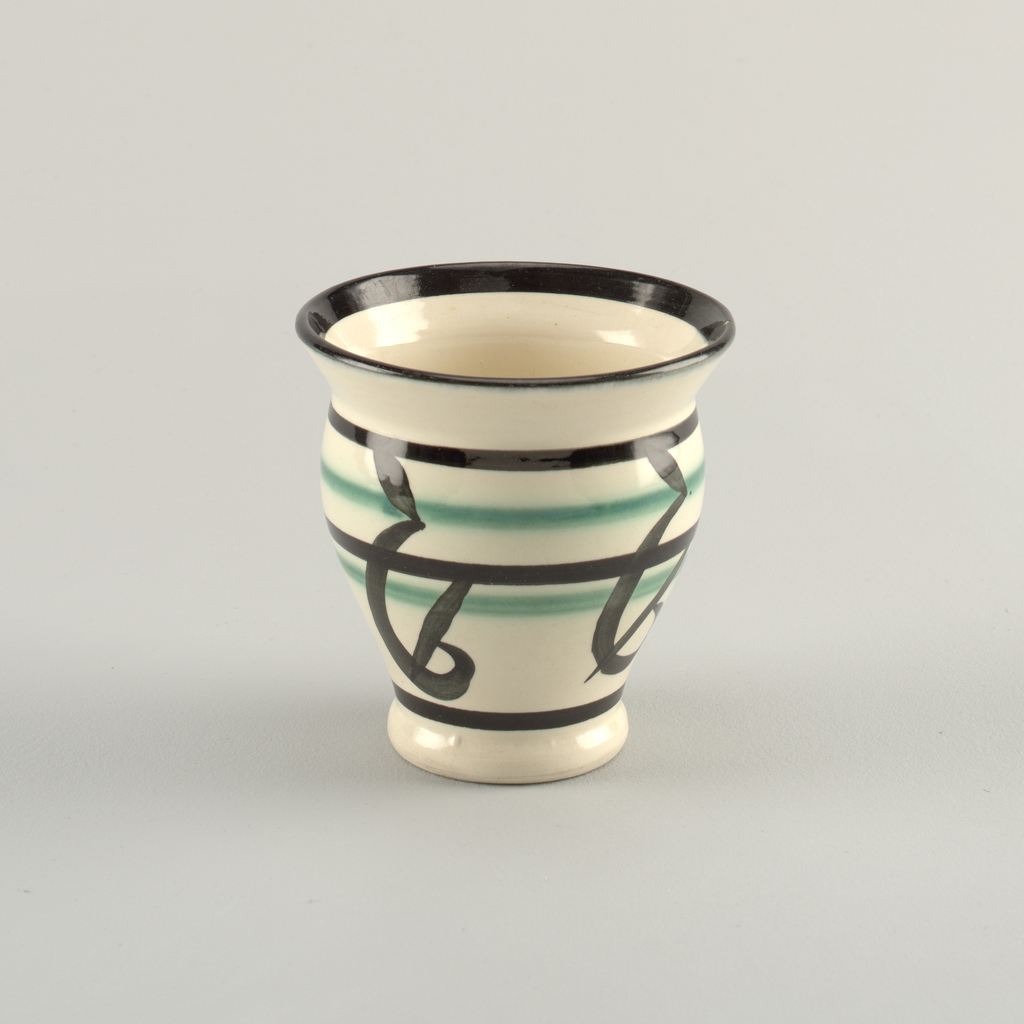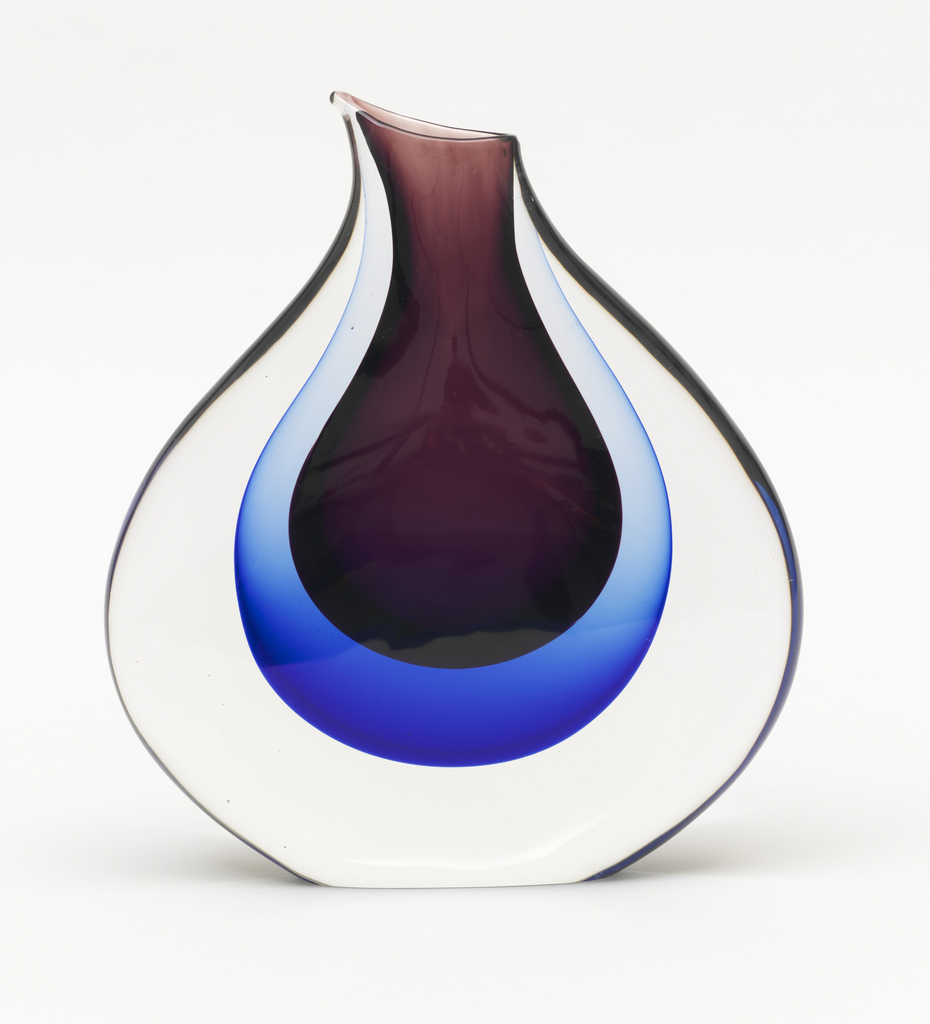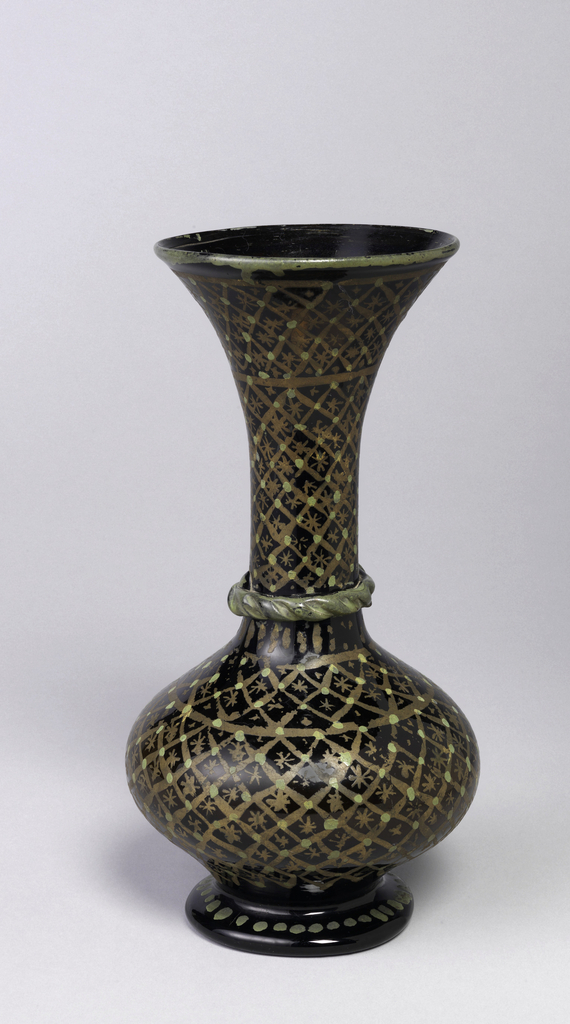In celebration of LGBTQ+ Pride Month, June Object of the Week posts highlight LGBTQ+ designers and design in the collection. Nature has a way of informing us—however we engage, we learn from its resilient processes. Nature also has a way of amusing, perplexing and delighting us with its complex and idiosyncratic forms. This edifying and...
The remarkably graphic, geometric pattern of bright yellow and sea-green crystalline forms that map the surface of this elongated, arrow-like vase appear definitively modern. The origin of this decoration, though, is decidedly not. This vase was made by Arabia, the principal industrial pottery in Finland during the opening decade and a half of the twentieth...
France started making advancements in wallpaper manufacture in the 1770s, and by the 1780s they were making papers of a quality that has never been surpassed. Réveillon is one of the better-known manufacturers from this period, and was most celebrated for his arabesque designs, which were influenced by the recently discovered wall paintings at Herculaneum...
The origins of this unique sample of wallpaper are unknown although it was most likely produced in France or Austria in the 1920s. Paul Frankl, prominent early modernist designer in the United States, gifted the wallpaper sample to Sarah and Eleanor Hewitt in 1930. The wallpaper is remarkable for being Cubist in style. The use...
Sarah D. Coffin discusses the technical excellence of this Lobmeyr Ambassador vase, now on view in The Jazz Age: American Style in the 1920s.
Modern Viennese design greatly influenced American style during the Jazz Age. This vase, currently on view in the The Jazz Age: American Style in the 1920s, chronicles this dialogue in the history of modern design. Remarkably, it was one of a pair originally offered in the short-lived Wiener Werkstätte showroom in New York City. Established in 1921...
Cynthia Trope discusses the intricate metalwork and lacquer work in this Jean Dunand vase.
Now on view in The Jazz Age: American Style in the 1920s, this vase by Dagobert Peche is an explosion of movement and life.
The Daum family name has been synonymous with art glass since the late 1800s when the family immigrated to Nancy, France. The patriarch Jean Daum and eldest son Auguste established a glasswork factory with their youngest son Antonin Daum who took the family industrial glass production in a new direction by introducing art glass. Antonin...
William De Morgan’s ceramic decoration was often inspired by the medieval world, similar to the practice of his dear friends William Morris and Edward Burne-Jones. De Morgan’s vases and tiles were frequently adorned with fantastical animals, beasts, and grotesques. On this vase, two stylized fish recall the designs found in illuminated manuscripts. Their bodies gently...
This slender bud vase by Louis Comfort Tiffany is an exquisite example of the favrile glass technique that the Tiffany Glass and Decorating Company developed in the last decade of the nineteenth century. While Louis C. Tiffany experimented with glassmaking leading up to this time, he used outside suppliers to provide him with the production...
The luminous iridescent shades of blue in this 8 ¼ inch tall vase are breathtaking. The neck’s chevron pattern resembles the “rippled” and “feathered” glass in Tiffany’s stained glass windows and famed lamps. This shade of blue is similar to the “aurene blue” created by Steuben Glass Works by 1904 and can be seen in a vase , also...
Margarete Heymann-Loebenstein-Marks, also known as Grete Marks, was a German ceramicist and painter who studied at the Bauhaus School of Arts in Weimer in 1920–21, alongside Paul Klee and Georg Muche. Prior to this, she had attended the Kunstgewerbeschule in Cologne and studied painting at the Akademie der bildenden Künste in Düsseldorf. Her time at...
Although this vase exemplifies a mid-twentieth century organic style of modernism, it comes from a glass factory with a long tradition of using historical production techniques, located on the island of Murano in Venice, Italy, an important glass-blowing center since the middle ages. In the mid-nineteenth century, Italian lawyer Antonio Salviati developed an interest in glass after...
This glass vase was made in the 17th or 18th century in Iran. It has a delicate applied glass rope ornament at the base of the neck, and is intricately decorated with gold enamel in a diamond and star pattern. The vase was free-blown, which means that it was produced without the use of a...
